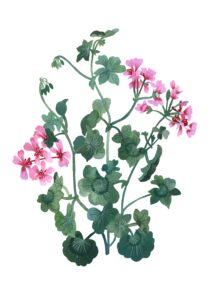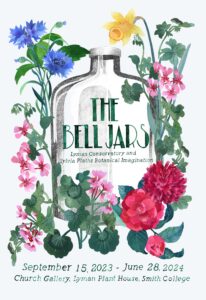 This two-day symposium asks what might be learned about the conditions of planetary life by looking closely at greenhouses and their atmospheres. These structures for growing plants were developed and refined across the colonial period to facilitate extractive bioprospecting and the display of exotica from tropical colonial holdings. Today, industrial-scale greenhouses churn out houseplants and grocery-store produce, while plant conservatories at botanic gardens continue to showcase specimens from far-away places. Life under glass is contradictory, with conditions for growth at once optimized and circumscribed. Moving through a plant conservatory is disorienting, affectively and visually: the controlled humidity and temperature; the filtered light; the heterogeneous botanical forms; the intensive, sometimes invisible labor of interspecies care. Visitors are transported across geographic space and evolutionary time. Since the late 19th century, glasshouses have stood as important sites for understanding the human condition in relation to capitalism, modernity, and environmental change. This was true for literary and philosophical figures such as Charles Baudelaire and Walter Benjamin, but also for natural scientists aiming to promote biodiversity and their iconic metaphor, the “greenhouse effect.”
This two-day symposium asks what might be learned about the conditions of planetary life by looking closely at greenhouses and their atmospheres. These structures for growing plants were developed and refined across the colonial period to facilitate extractive bioprospecting and the display of exotica from tropical colonial holdings. Today, industrial-scale greenhouses churn out houseplants and grocery-store produce, while plant conservatories at botanic gardens continue to showcase specimens from far-away places. Life under glass is contradictory, with conditions for growth at once optimized and circumscribed. Moving through a plant conservatory is disorienting, affectively and visually: the controlled humidity and temperature; the filtered light; the heterogeneous botanical forms; the intensive, sometimes invisible labor of interspecies care. Visitors are transported across geographic space and evolutionary time. Since the late 19th century, glasshouses have stood as important sites for understanding the human condition in relation to capitalism, modernity, and environmental change. This was true for literary and philosophical figures such as Charles Baudelaire and Walter Benjamin, but also for natural scientists aiming to promote biodiversity and their iconic metaphor, the “greenhouse effect.”
Newly attuned to the politics of breathing and atmosphere in a world transformed by a global pandemic, climate change, and anti-Black police violence; newly attuned to the aesthetics of interspecies love in a world of extinctions; newly attuned to the politics of knowledge catalyzed by global feminisms, decolonial and postcolonial theory, Indigenous sovereignty movements, and the rematriation of science and art collections—what might we learn about the pleasures and perils of life on Earth from encounters under glass today? This symposium brings together leading scholars of breathing and transpiration, feminism and botany, glass and modernity, collections and colonization, to explore that question.
 This symposium grows out of a year-long exhibit (AY23-24) at the Smith College Botanic Garden, “The Bell Jars: Lyman Conservatory and Sylvia Plath’s Botanical Imagination.” The exhibit examines Plath’s time as a student in a botany course at the Smith glasshouse complex, where she conducted plant physiology experiments using another glass horticultural technology: bell jars. Those bell jars not only taught her to see how gases moved across the leaf surface during photosynthesis, but also inspired her novel’s famous trope for the oppressive atmospheres of 1950s US patriarchy. Plath’s rendering of this complex site of trauma and care, captivity and freedom, points to the possibilities of a botanical humanities still yet to come.
This symposium grows out of a year-long exhibit (AY23-24) at the Smith College Botanic Garden, “The Bell Jars: Lyman Conservatory and Sylvia Plath’s Botanical Imagination.” The exhibit examines Plath’s time as a student in a botany course at the Smith glasshouse complex, where she conducted plant physiology experiments using another glass horticultural technology: bell jars. Those bell jars not only taught her to see how gases moved across the leaf surface during photosynthesis, but also inspired her novel’s famous trope for the oppressive atmospheres of 1950s US patriarchy. Plath’s rendering of this complex site of trauma and care, captivity and freedom, points to the possibilities of a botanical humanities still yet to come.
The exhibit occupies the physical space of Lyman Plant House, but also in the digital space of an essay collection called “The Plath Conservatory.” The essays are written by students enrolled in a Spring 2023 Anthropology course, scrutinize Plath’s prose, poetry, correspondence, and more to understand the origins and possible meanings of her botanical tropes. Student essays examine one plant species that features in Plath’s work, accounting for its ecology, geography, and taxonomy; the symbolic work it does in Plath’s writing; and the historical context in which Plath came to know it. Collectively, they demonstrate how Plath’s education in botanical science helped her to theorize the human experience, particularly for women living under the oppressive atmospheres of 1950s USA patriarchy.
In addition, it is joined by a sister exhibition at the Smith College Special Collection, “Sylvia Plath’s Life as a Student at Smith College.” That exhibition, organized by STRIDE students Gabi Dondes (’26) and Emilia Neyer (’26), examines the ordinary life of Sylvia Plath at Smith College before she found fame as a poet and novelist.
Acknowledgements
Thanks to Smith College and the many units who have supported these exhibits and this event, including the Smith College Botanic Garden, the Provost’s Office, the Smith College Special Collections, the Department of Anthropology, the Department of English, the Department of Biological Sciences, the Environmental Science & Policy Program, the Louise W. and Edmund J. Kahn Institute, the Program for the Study of Women and Gender, the Landscape Studies Program, the Center for the Environment, Ecological Design, and Sustainability (CEEDS), the Boutelle-Day Poetry Center, the Smith College Lecture Committee, Amanda Golden, Karen Kukil, the STRIDE Program, the Design Thinking Initiative, the UMass Amherst Environmental Humanities Initiative, and the UMass Amherst Anthropocene Lab. Thanks to IT Services and Travis Gandy for assistance with this website. Thanks to Jeanette Wintjen, Karikari Acheampong, and Mariam Habib for assistance with bookings, reservations, and more. All illustrations used on this site are by Malin Gyllensvaan (except where specified) and used with permission.